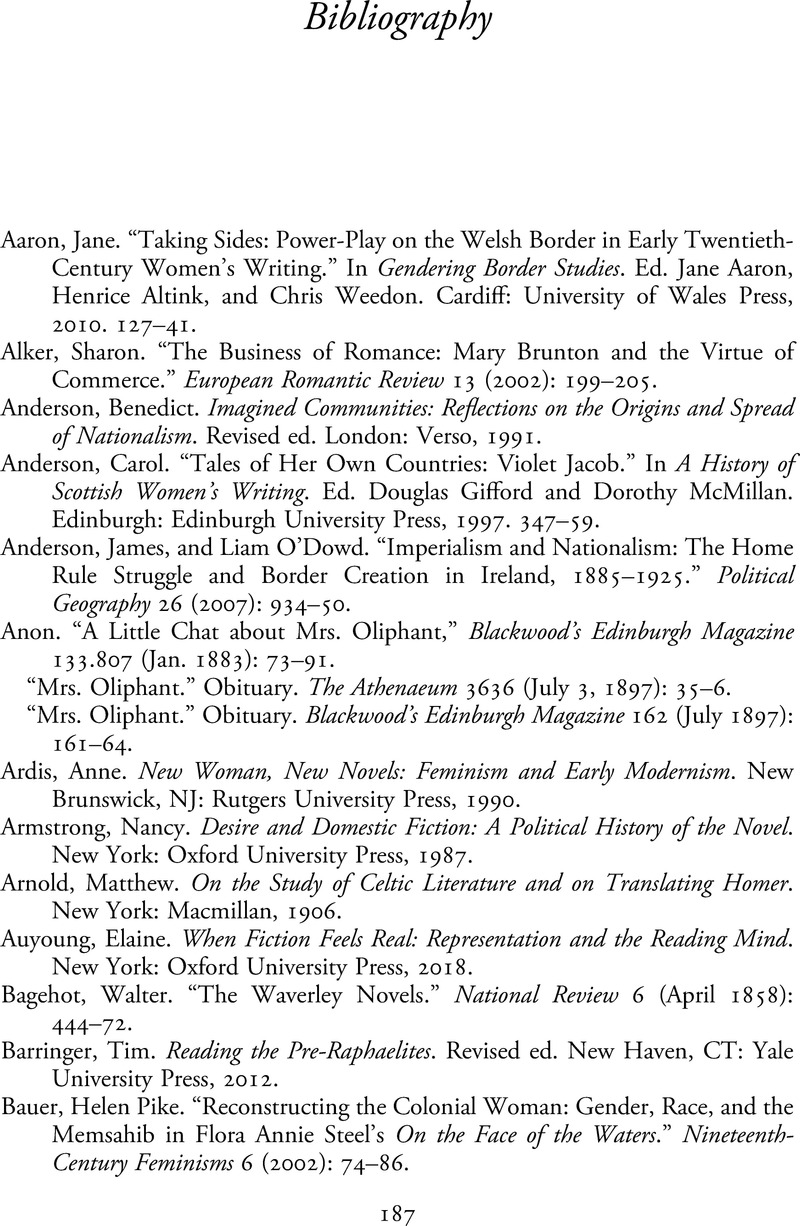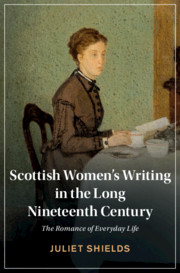Book contents
- Scottish Women’s Writing in the Long Nineteenth Century
- Cambridge Studies in Nineteenth‐Century Literature And Culture
- Scottish Women’s Writing in the Long Nineteenth Century
- Copyright page
- Contents
- Acknowledgments
- Introduction
- Chapter 1 Oliphant, Scott, and the Novelist’s Trade
- Chapter 2 Annie S. Swan’s Friendly Fiction
- Chapter 3 The Scottish New Woman and the Art of Self-Sacrifice
- Chapter 4 The Colonial Adventure Story and the Return of Romance
- Chapter 5 Scottish Modernism and Middlebrow Aesthetics
- Conclusion
- Bibliography
- Index
- Cambridge Studies in Nineteenth-Century Literature and Culture
- References
Bibliography
Published online by Cambridge University Press: 27 July 2021
- Scottish Women’s Writing in the Long Nineteenth Century
- Cambridge Studies in Nineteenth‐Century Literature And Culture
- Scottish Women’s Writing in the Long Nineteenth Century
- Copyright page
- Contents
- Acknowledgments
- Introduction
- Chapter 1 Oliphant, Scott, and the Novelist’s Trade
- Chapter 2 Annie S. Swan’s Friendly Fiction
- Chapter 3 The Scottish New Woman and the Art of Self-Sacrifice
- Chapter 4 The Colonial Adventure Story and the Return of Romance
- Chapter 5 Scottish Modernism and Middlebrow Aesthetics
- Conclusion
- Bibliography
- Index
- Cambridge Studies in Nineteenth-Century Literature and Culture
- References
Summary

- Type
- Chapter
- Information
- Scottish Women's Writing in the Long Nineteenth CenturyThe Romance of Everyday Life, pp. 187 - 198Publisher: Cambridge University PressPrint publication year: 2021



